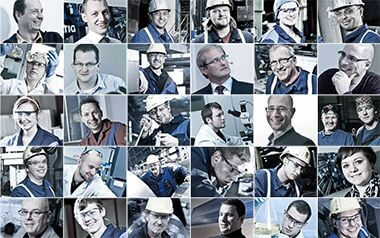Cold work tool steels are used for the manufacture of tools, where a surface temperature of 200°C is generally not exceeded. However, due to frictional heat or during polymer processing, temperatures above 300℃ can also occur in some cases.
Cold work steels must have special properties in this temperature range so that the tools made with them can withstand all the high stresses occurring in the numerous non-cutting shaping processes, i.e. high hardness, high wear resistance, good toughness, high resistance to pressure and impact stress and high fatigue strength, low dimensional change during heat treatment and adequate machinability.
The spectrum of cold work steels includes pure C steels, low and medium alloyed steels with higher C content and preferred alloying elements such as Mn, Cr, W, Mo, V, up to high alloyed tool steels with high Cr, Mo, W, V contents.
The required property combinations are achieved through the carbide content, which is specifically adjusted by alloying technology, and through special heat treatment of the tools, e.g. hardening and tempering to hardness values of approx. 50 to over 64 HRC. A sufficiently high carbon content of approx. 0.5 to 2% ensures the necessary hardening. The content, type and distribution of carbides ensures wear resistance.
Special metallurgical production processes for cold work tool steels, such as electro-slag remelting (BÖHLER ISODUR grade) or powder metallurgical production (BÖHLER MICROCLEAN grade) allow the production of highly alloyed, high-purity and very homogeneous products, which are characterised by the best combination of hardness, wear resistance, fracture resistance and fatigue resistance.
Preferred fields of application for cold work steels are tools for manufacturing processes such as punching, cutting, fineblanking, for sheet metal forming, rolling, cold massive forming, e.g. coining and sinking, extrusion, but also for tools in plastics processing with working temperatures in the aforementioned range and a wide variety of hand tools. In many cases, specially heat-treated high-speed steels also meet the requirements in cold work applications.
















